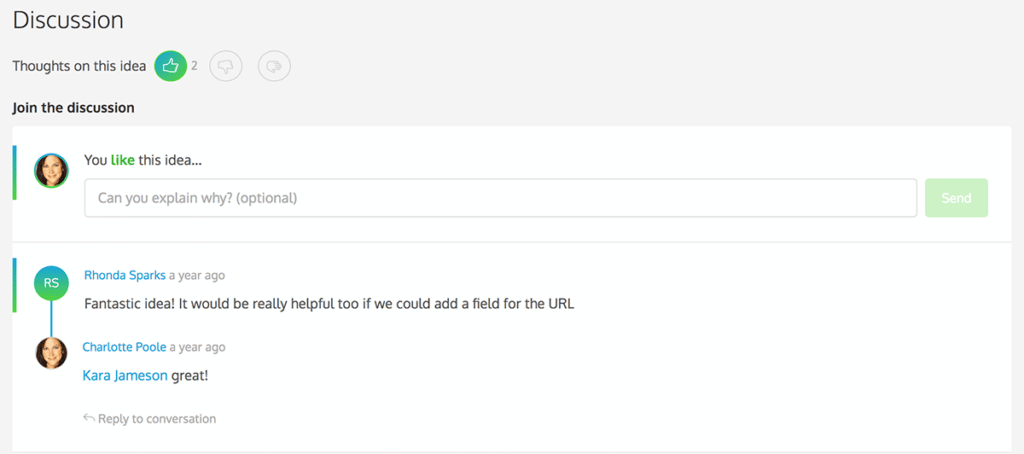How To Get Brilliant Product Ideas Out Of Non-Product People
The life of a product manager can be lonely, especially if companies continue to believe that it’s a PM’s duty to somehow generate new product ideas on their own.
There’s a less lonely way, says MindtheProduct co-founder Martin Eriksson:
“The bottom line is that everyone in the company owns the product, and its success or failure lie in the hands of everyone who touches it. A product manager’s job is to lead the team to tackle the product challenges together, to get the best out of everyone on the team when building the product, and to provide a gentle hand to keep it all consistent and going in the right direction.”
In other words, effective product teams (and companies) work together.
But the near-universal experience of product managers who try to get their non-product teams in the game is underwhelming.
‘Let’s make that button blue!’ or ‘Can we get this new feature in?’
You can’t do anything with that.
This is as far as “team collaboration” usually gets for product managers, who have no idea what to do with a inbox full of zero context ideas.
There are a few things happening here.
First, the people who work with you don’t realize how many of those ideas pile up in your product backlog. They don’t know the kinds of things you’re weighing up. They also don’t know how much time it takes you to go through your backlog. If they’re unhelpful, it’s probably because they don’t really know what you do.
At ProdPad, we’ve found that you can incentivize your colleagues to send you better ideas by making it easy for them to submit ideas to the product backlog and by acknowledging them in a timely manner.
The following has worked so well for us that we’ve built it into our own product:
1. Ask for a business case with each idea
I love that anyone who submits a new idea in ProdPad has to think about why they’re doing it. The two questions that make up the business case give you some much needed context:
- What problem are you trying to solve?
- What value would it provide to the business or users if it were solved? (think OKRs/KPIs)
That gets your colleagues to think a little more like you do. It also keeps useless one-liners out of your backlog and limits the number of ideas you have to look at every week.
I like to refer to it as ‘the deterrent to bad ideas,’ but in a good way! Long gone are the days of ‘Hey, how about we make that button blue?’ NO.
Some product managers find the business case so useful, they even enforce a rule: No business case, no go.
2. Don’t accept votes – ask for comments
Voting is good. It’s a low-touch way to get your people involved in the product process. But votes don’t tell you much, and some votes are more important than others.
For you, the real value lies in the comments. That’s because some of your colleagues are more invested in or closer to an issue than others. This is their opportunity to flag up concerns you haven’t thought about and open up the floor to new angles you need to consider.
When you hold a team vote, insist on a short summary of the reasoning behind their vote.
Here’s what it looks like in ProdPad:

3. Always give quick, personal feedback
I’ve found that the biggest determining factor behind how active your team will be is acknowledgement – from you, that is.
Add a quick note letting your team know that you are paying attention, that their thoughts do matter, and that you find their input helpful.
As you’re sorting your backlog and either moving an idea forward or archiving it, be sure to leave a quick comment to the creator. Was it a good idea? Tell them! Want to get your team involved? Tell them! Is it missing a business case? ಠ_ಠ … tell them that too!
Remember that people thrive on positive reinforcement. A little acknowledgement will win you more of the insights you’re after.
4. Let them help write product specs
The best way to bridge the gap between teams is to have them help you develop product specs. We implemented assignments to it easier to hand over an idea to a team member for them to work on.
There are three levels of assignments in ProdPad:
- Creator – The team member who submits an idea into ProdPad
- Author – If the creator is submitting an idea on behalf of someone else, they can credit them as the author. (This is helpful when the creator and author work together to help spec out an idea)
- Owner – This is generally the product manager that owns the idea that is attached to a particular product. (You can use this to specify a product manager, if you have several different product teams)
Regardless of user permissions, you can reassign the author and owner as needed to pass the product idea around between team members. That helps them to collaborate and assist you in the ideation process. When the idea is completed, the owner/product manager can then push the idea to development.
The Takeaway
What keeps many of your colleagues away from your product management process is that they don’t know what you do and what you need from them. (Can you blame them? Plenty of CEOs don’t either.)
If you’ve been struggling to get a collaborative culture going at your company, watch how fast that changes when you tell them what you’re looking for.

